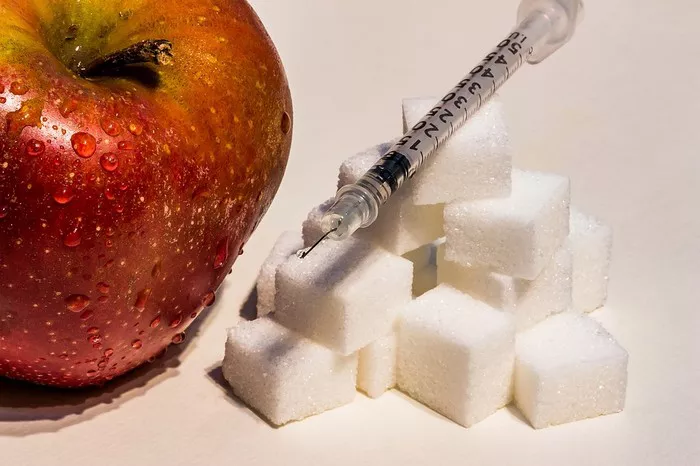Understanding Diabetes and Its Impact on Diet
Diabetes is a chronic condition characterized by elevated levels of blood glucose (sugar). It occurs either because the body does not produce enough insulin (type 1 diabetes) or because the body cannot effectively use the insulin it produces (type 2 diabetes). A third form, gestational diabetes, occurs during pregnancy but usually resolves after childbirth. Regardless of the type, managing blood sugar levels through diet is crucial for preventing complications such as heart disease, nerve damage, kidney disease, and vision problems.
The Importance of a Balanced Diet in Diabetes Management
A balanced diet is the cornerstone of diabetes management. It helps regulate blood sugar levels, maintain a healthy weight, and reduce the risk of diabetes-related complications. Key elements of a balanced diabetic diet include:
- Carbohydrates: These are the primary source of energy and have the most significant impact on blood sugar levels. Choosing the right type and amount is essential.
- Proteins: Necessary for body repair and maintenance, proteins can also help with satiety and weight management.
- Fats: While fats are energy-dense, choosing healthy fats is important to reduce the risk of cardiovascular disease.
- Fiber: Aids in digestion, helps control blood sugar levels, and can contribute to a feeling of fullness.
- Vitamins and Minerals: Essential for overall health and the proper functioning of the body.
Carbohydrates: Quality and Quantity Matter
Carbohydrates are found in a wide range of foods, including grains, fruits, vegetables, dairy products, and sweets. When consumed, they break down into glucose, which enters the bloodstream. Therefore, understanding carbohydrate content and type is critical for diabetics.
Choosing the Right Carbohydrates
- Complex Carbohydrates: Found in whole grains, legumes, vegetables, and fruits. These are preferred because they are digested more slowly, resulting in a gradual rise in blood sugar levels. Examples include:
- Whole wheat bread and pasta
- Brown rice
- Quinoa
- Oats
- Lentils and beans
- Simple Carbohydrates: Found in foods such as white bread, pastries, and sugary drinks. These cause a rapid spike in blood sugar levels and should be limited. Examples include:
- Sugary snacks and desserts
- Sodas and sugary beverages
- White rice and bread
Carbohydrate Counting and Portion Control
Carbohydrate counting is a meal planning technique that can help manage blood sugar levels. It involves keeping track of the amount of carbohydrate in the foods you eat. Tools such as food labels and carbohydrate-counting apps can be beneficial.
Portion Control Tips:
- Use smaller plates to help manage portion sizes.
- Measure portions using a food scale or measuring cups.
- Be mindful of serving sizes listed on food labels.
Incorporating Protein into Your Diet
Proteins are essential for muscle repair, immune function, and satiety. Including a variety of protein sources in your diet can help manage blood sugar levels and support overall health.
Healthy Protein Sources
- Animal Proteins: Choose lean cuts of meat and poultry to reduce saturated fat intake. Examples include:
- Skinless chicken and turkey
- Lean beef and pork
- Fish (particularly fatty fish like salmon and mackerel, which are high in omega-3 fatty acids)
- Eggs and low-fat dairy products
- Plant Proteins: These are often lower in saturated fat and higher in fiber. Examples include:
- Legumes (beans, lentils, chickpeas)
- Nuts and seeds
- Tofu and tempeh
- Whole grains like quinoa and farro
Balancing Protein Intake
Distributing protein intake throughout the day can help maintain stable blood sugar levels. Aim to include a source of protein in each meal and snack.
Healthy Fats: What to Include and What to Avoid
While fats are an essential part of the diet, not all fats are created equal. The type of fat consumed can significantly impact heart health, which is particularly important for individuals with diabetes, who are at higher risk for cardiovascular disease.
Healthy Fats
- Monounsaturated Fats: Found in foods like olive oil, avocados, and certain nuts. These fats can help reduce bad cholesterol levels and lower the risk of heart disease. Examples include:
- Olive oil and canola oil
- Avocados
- Almonds, cashews, and peanuts
- Polyunsaturated Fats: These include omega-3 and omega-6 fatty acids, which are essential for brain function and cell growth. Examples include:
- Fatty fish (salmon, mackerel, sardines)
- Walnuts and flaxseeds
- Sunflower and safflower oil
Fats to Limit or Avoid
- Saturated Fats: Found in high amounts in animal products and processed foods. These can raise bad cholesterol levels and should be limited. Examples include:
- Fatty cuts of meat and poultry skin
- Full-fat dairy products
- Butter and lard
- Trans Fats: These are found in partially hydrogenated oils and should be avoided as they increase bad cholesterol and lower good cholesterol. Examples include:
- Fried foods
- Packaged snacks and baked goods
- Margarines and shortening
The Role of Fiber in Diabetes Management
Fiber, particularly soluble fiber, can slow the absorption of sugar and help improve blood sugar levels. Additionally, fiber aids in digestion and can help you feel full, which may assist with weight management.
High-Fiber Foods
- Whole Grains: Choose whole grains over refined grains for added fiber. Examples include:
- Oatmeal
- Brown rice
- Whole wheat bread and pasta
- Barley and quinoa
- Fruits and Vegetables: These are naturally high in fiber and provide essential vitamins and minerals. Examples include:
- Apples, berries, and oranges
- Leafy greens like spinach and kale
- Carrots, broccoli, and Brussels sprouts
- Legumes: Beans, lentils, and peas are excellent sources of both fiber and protein. Examples include:
- Black beans, kidney beans, and chickpeas
- Lentils and split peas
- Nuts and Seeds: These provide fiber along with healthy fats. Examples include:
- Chia seeds and flaxseeds
- Almonds and walnuts
Vitamins and Minerals: Essential Nutrients for Diabetics
Vitamins and minerals play crucial roles in various bodily functions and overall health. For individuals with diabetes, certain nutrients are particularly important.
Key Vitamins and Minerals
- Vitamin D: Helps with calcium absorption and bone health. Sources include:
- Fatty fish (salmon, mackerel)
- Fortified milk and orange juice
- Sun exposure
- Magnesium: Involved in glucose metabolism and insulin sensitivity. Sources include:
- Green leafy vegetables (spinach, kale)
- Nuts and seeds (almonds, pumpkin seeds)
- Whole grains and legumes
- Chromium: Helps with carbohydrate and lipid metabolism. Sources include:
- Broccoli
- Grape juice
- Whole grains
- Potassium: Helps maintain proper heart and muscle function. Sources include:
- Bananas and oranges
- Potatoes and sweet potatoes
- Beans and lentils
Meal Planning Strategies for Diabetics
Effective meal planning can help maintain stable blood sugar levels, support weight management, and ensure nutritional needs are met. Here are some strategies to consider:
The Plate Method
The plate method is a simple way to ensure balanced meals. It involves dividing your plate into sections:
- Half of your plate with non-starchy vegetables (broccoli, spinach, carrots)
- One quarter with lean protein (chicken, fish, tofu)
- One quarter with whole grains or starchy vegetables (brown rice, sweet potatoes)
Glycemic Index and Glycemic Load
The glycemic index (GI) measures how quickly a carbohydrate-containing food raises blood sugar levels. Foods with a low GI cause a slower, more gradual rise in blood sugar. Glycemic load (GL) takes into account the amount of carbohydrate in a portion of food. Combining these tools can help in selecting appropriate foods.
Snacking Wisely
Choosing healthy snacks can prevent blood sugar spikes and keep hunger at bay. Ideal snacks include a combination of carbohydrates, protein, and healthy fats. Examples include:
- Apple slices with almond butter
- Greek yogurt with berries
- A handful of nuts with a piece of fruit
Hydration
Staying hydrated is important for overall health and can help manage blood sugar levels. Water is the best choice, but other options include:
- Herbal teas
- Unsweetened coffee
- Sparkling water
Avoid sugary drinks and limit alcohol consumption, as they can significantly impact blood sugar levels.
Special Considerations for Different Types of Diabetes
Type 1 Diabetes
Individuals with type 1 diabetes need to balance insulin administration with carbohydrate intake to maintain blood sugar levels. This involves:
- Carbohydrate Counting: Precisely calculating carbohydrate intake to adjust insulin dosage accordingly.
- Consistent Eating Patterns: Regular meals and snacks to match insulin activity and prevent hypoglycemia.
- Monitoring Blood Sugar Levels: Frequent checks to ensure insulin doses are effective.
Type 2 Diabetes
For those with type 2 diabetes, diet and lifestyle changes can significantly improve blood sugar control. Key strategies include:
- Weight Management: Achieving and maintaining a healthy weight can improve insulin sensitivity.
- Balanced Diet: Emphasizing whole foods, lean proteins, and healthy fats.
- Regular Physical Activity: Exercise can help manage blood sugar levels and support weight loss.
Gestational Diabetes
Pregnant women with gestational diabetes need to manage blood sugar levels to ensure a healthy pregnancy. Important considerations include:
- Small, Frequent Meals: Helps maintain stable blood sugar levels.
- Balanced Diet: Includes a mix of carbohydrates, proteins, and fats.
- Monitoring Blood Sugar Levels: Regular checks to adjust diet and insulin as needed.
Common Myths and Misconceptions About Diabetes and Diet
Myth: Diabetics Must Avoid All Carbohydrates
Fact: Carbohydrates are a necessary part of a balanced diet. The key is to choose complex carbohydrates and control portion sizes.
Myth: Diabetics Can’t Eat Sugar at All
Fact: Diabetics can have sugar in moderation. It’s important to monitor overall carbohydrate intake and choose nutrient-dense foods.
Myth: Diabetics Should Only Eat “Diabetic” Foods
Fact: “Diabetic” foods are often processed and may contain unhealthy ingredients. A balanced diet with whole foods is usually the best approach.
Myth: Fruits Are Bad for Diabetics
Fact: Fruits contain natural sugars but also provide fiber, vitamins, and minerals. Consuming them in moderation as part of a balanced diet is beneficial.
Conclusion: A Path to Healthy Eating with Diabetes
Managing diabetes through diet involves understanding the impact of different foods on blood sugar levels and making informed choices. By focusing on balanced meals, portion control, and the quality of carbohydrates, proteins, and fats, individuals with diabetes can maintain stable blood sugar levels and improve their overall health. Regular monitoring, meal planning, and staying informed about nutrition are essential steps towards effective diabetes management. With these strategies, living well with diabetes is not only possible but can lead to a healthier, more fulfilling life.
Related topics:
Are Bananas a Good Fruit for Diabetics?

























